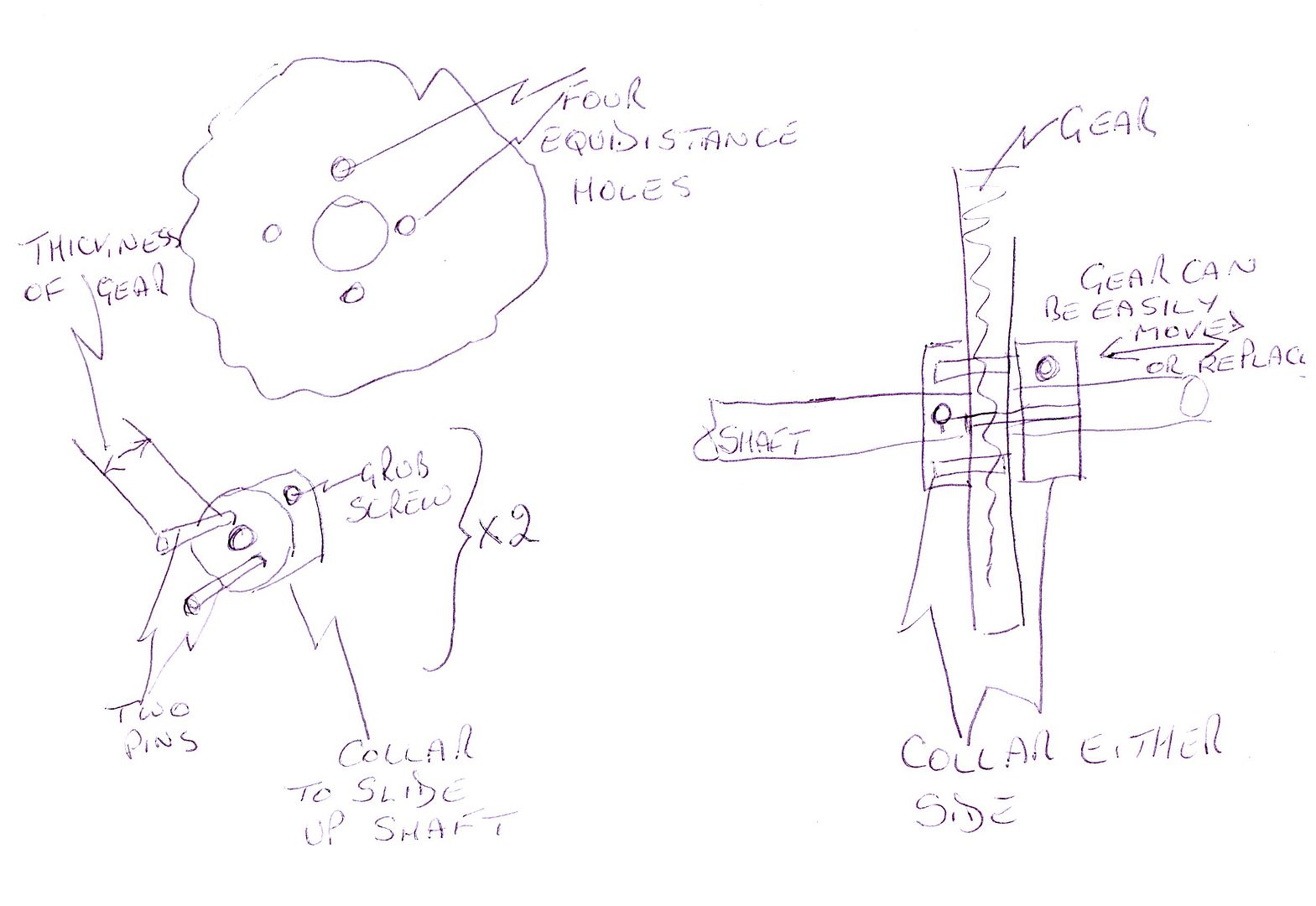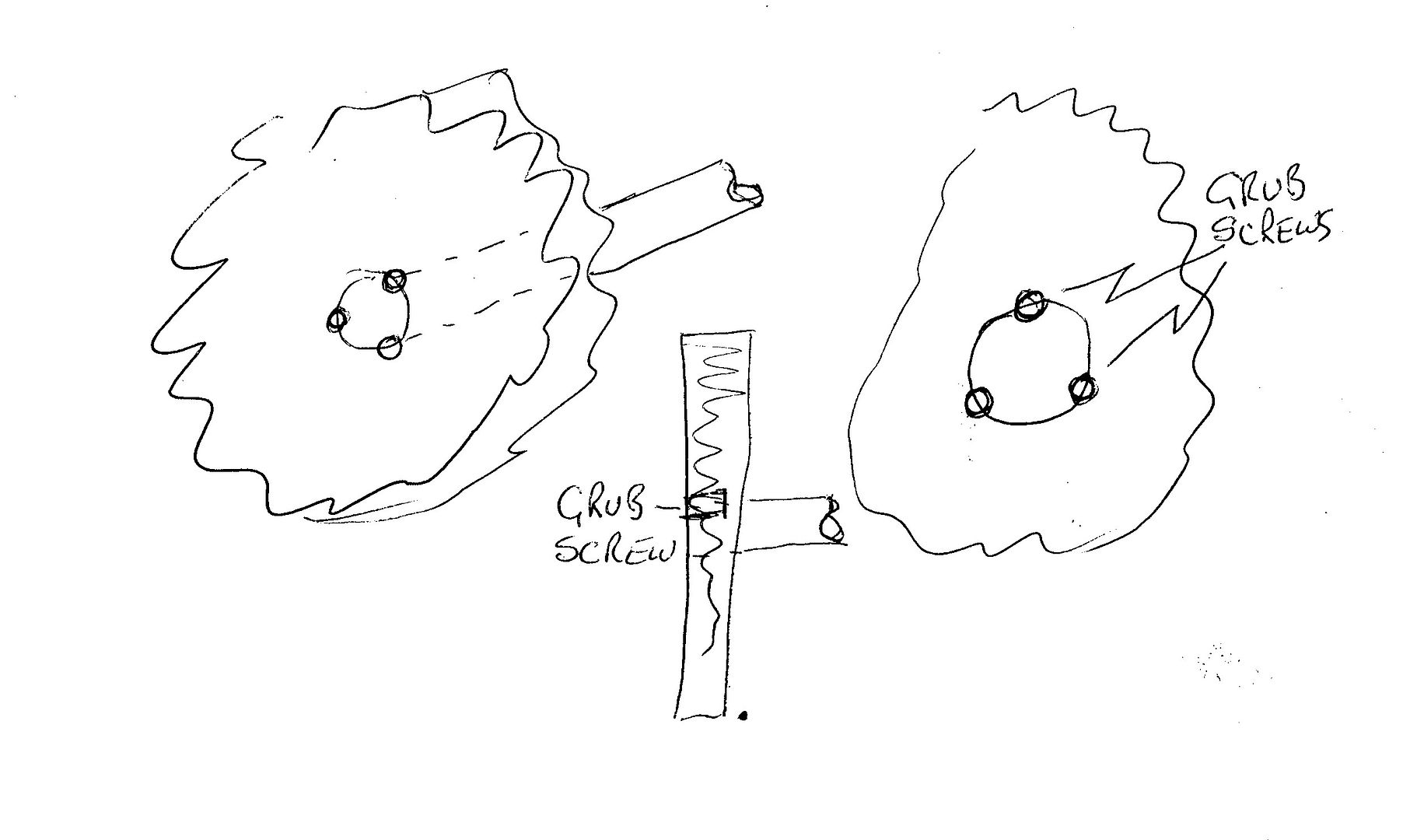yadnom1973
Well-Known Member
- Joined
- Oct 19, 2016
- Messages
- 49
- Reaction score
- 2
Im struggling with attaching a nylon gear to the end of a steel shaft. Its part of the drive for a small rail based dolly that is hand pushed with a 5.5kg flywheel inside geared up to x9 or x2 by the time it hits this nylon gear so I want it to be a solid connection. Its a 65mm diameter by 15mm wide helical gear with no boss, the shaft is 12mm diameter but could be increased to 15mm if that was needed. So far Ive these three ideas:
A. Drill and tap a M4 or M5 hole through the shaft then drill right through the gear one side to the other and have a threaded bar the width of the gear run through it.
B. The same but instead of drilling through the gear and damaging the teeth I could cut a slot into the face of the gear and slide it into place.
C. I could machine a 3mm counter bore on the side of the gear. Weld a little metal disk to the end of the shaft then sink bolts through the disk into the gear. This is by far the most solid option but I'm worried that it would result in the gear no longer being true.

Im new to all this kind of stuff and really struggles to find any sensible advice so I thought Id come here and ask you guys. Dose anyone know of any better ways to go about this?
A. Drill and tap a M4 or M5 hole through the shaft then drill right through the gear one side to the other and have a threaded bar the width of the gear run through it.
B. The same but instead of drilling through the gear and damaging the teeth I could cut a slot into the face of the gear and slide it into place.
C. I could machine a 3mm counter bore on the side of the gear. Weld a little metal disk to the end of the shaft then sink bolts through the disk into the gear. This is by far the most solid option but I'm worried that it would result in the gear no longer being true.
Im new to all this kind of stuff and really struggles to find any sensible advice so I thought Id come here and ask you guys. Dose anyone know of any better ways to go about this?






